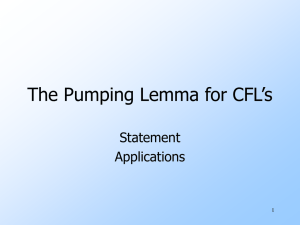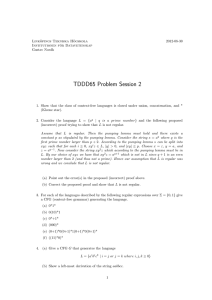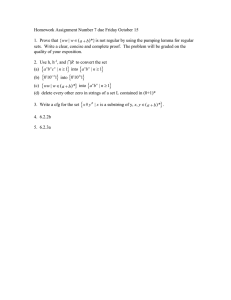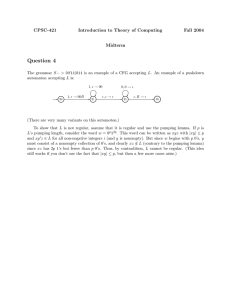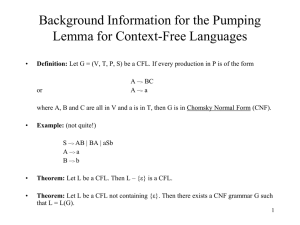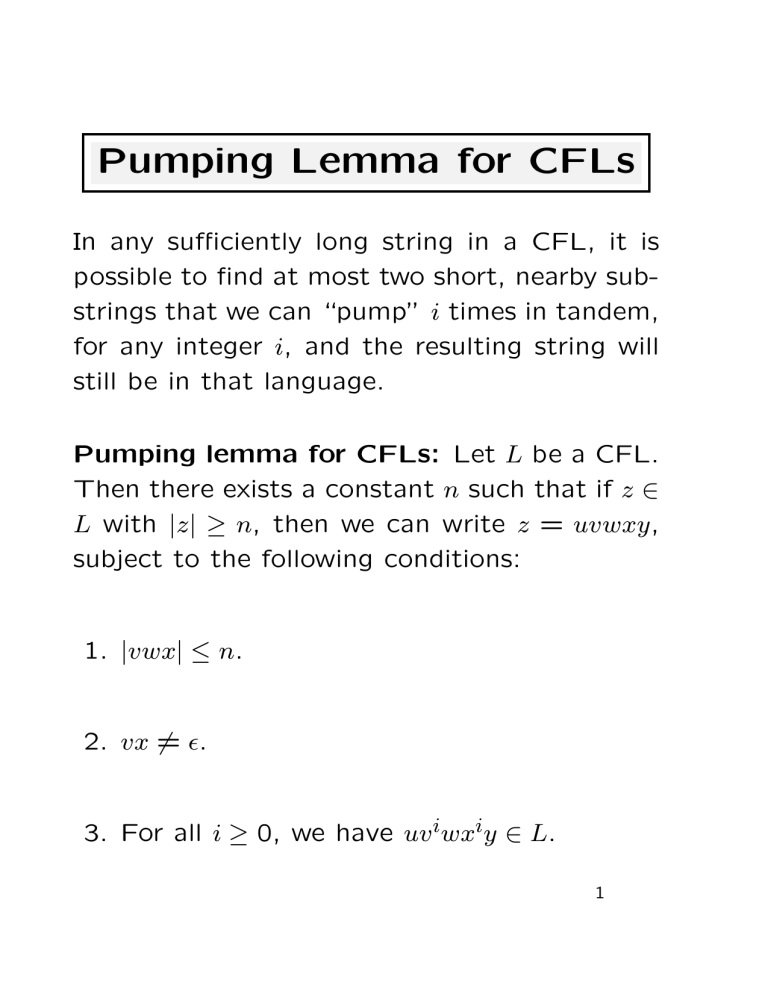
Pumping Lemma for CFLs
In any sufficiently long string in a CFL, it is
possible to find at most two short, nearby substrings that we can “pump” i times in tandem,
for any integer i, and the resulting string will
still be in that language.
Pumping lemma for CFLs: Let L be a CFL.
Then there exists a constant n such that if z ∈
L with |z| ≥ n, then we can write z = uvwxy,
subject to the following conditions:
1. |vwx| ≤ n.
2. vx 6= .
3. For all i ≥ 0, we have uv iwxiy ∈ L.
1
Examples
While CFLs can match two sub-strings for (in)
equality of length, they cannot match three
such sub-strings.
Example 1: Consider L = {0m1m2m | m ≥ 1}.
Pick n of the pumping lemma. Pick z = 0n1n2n.
Break z into uvwxy, with |vwx| ≤ n and vx 6= .
Hence vwx cannot involve both 0s and 2s, since
the last 0 and the first 2 are at least n + 1 positions apart. There are two cases:
• vwx has no 2s. Then vx has only 0s and
1s. Then uwy, which would have to be in
L, has n 2s, but fewer than n 0s or 1s.
• vwx has no 0s. Analogous.
Hence L is not a CFL.
3
Examples (continued)
CFLs cannot match two pairs of sub-strings of
equal lengths if the pairs interleave.
Example 2: Consider L = {0i1j 2i3j | i, j ≥ 1}.
Pick n of the pumping lemma. Pick z = 0n1n2n3n.
Break z into uvwxy, with |vwx| ≤ n and vx 6= .
Then vwx contains one or two different symbols. In both cases, the string uwy cannot be
in L.
CFLs cannot match two sub-strings of arbitrary length over an alphabet of at least two
symbols.
Example 3: Consider L = {ww | w ∈ {0, 1}∗}.
Pick n of the pumping lemma. Pick z = 0n1n0n1n.
In all cases, the string uwy cannot be in L.
4
